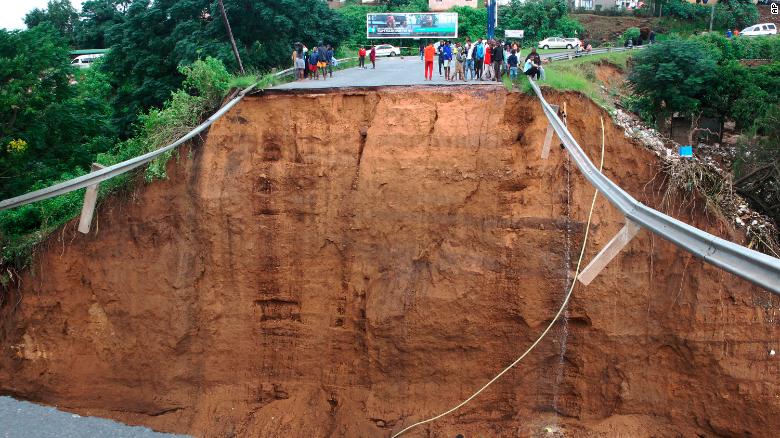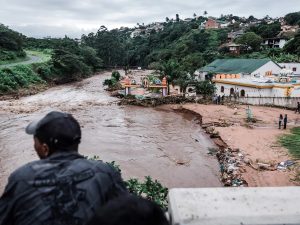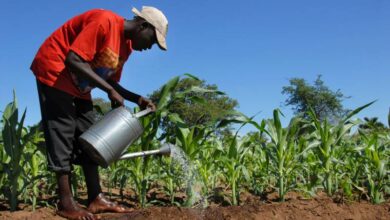
As torrential rains take a break over the KwaZulu-Natal Province in South Africa, the damage and death toll come into focus. More than 300 people are reported dead, and many are missing — some are calling this the country’s deadliest storm on record.
Widespread flash and river flooding also led to infrastructure destruction, including numerous bridges, cell towers and water treatment facilities.
On Tuesday afternoon, the provincial government of KwaZulu-Natal declared a state of disaster. The death toll is expected to rise as search and rescue teams continue operations The Trumpet gathered.
“The heavy rainfall that has descended on our land over the past few days, has wreaked untold havoc and unleashed massive damage to lives and infrastructure,” wrote the KwaZulu-Natal Provincial Government.
Rainfall was primarily caused by subtropical storm Issa, which was named on April 12 off the coast of South Africa. More than 200 millimeters of rain fell in 24 hours, with some stations reporting more than 300 millimeters as of Tuesday:
King Shaka International Airport: 8.9 inches (225 mm)
Margate: 12.2 inches (311 mm)
Mount Edgecombe: 12 inches (307 mm)
Port Edward: 7 inches (188 mm)
Virginia airport (Durban north): 11.9 inches (304 mm)
The storm “dropped 307 mm of rain in 24 hours in Durban, South Africa. That’s 4x the monthly average (73mm) in a single day!” tweeted meteorologist Derek Van Dam.
The worst of the flooding and landslides is mainly along the country’s east coast. Numerous mudslides have happened because of the saturated soil, destroying buildings and trapping people underneath.
Government officials have called the rain “one of the worst weather storms in the history of our country.”
 A new round of rainfall, some heavy, is slated to affect the east coast of South Africa this weekend into early next week. While totals are expected to be considerably less than with the recent event, saturated soils mean it won’t take much to exacerbate problems. The South African Weather Service issued warnings across the region for Friday and Saturday.
A new round of rainfall, some heavy, is slated to affect the east coast of South Africa this weekend into early next week. While totals are expected to be considerably less than with the recent event, saturated soils mean it won’t take much to exacerbate problems. The South African Weather Service issued warnings across the region for Friday and Saturday.
Read Also: Accra 2023: NCF provides cricket consultants to Ghana
Such extreme rainfall events have been linked to climate change in the past, as warming waters and atmosphere are increasing the rainfall output of tropical and subtropical cyclones in many parts of the globe.
Earlier this week, the World Weather Attribution found the amount of rainfall from a spate of cyclones to hit Madagascar and nearby countries increased because of climate change. Another recent study showed that the historic Atlantic hurricane season in 2020, which had the most storms on record in a season, also dropped more rainfall because of climate change.
As the climate continues to warm, storm hazards and impacts will worsen. The latest report from the U.N. Intergovernmental Panel on Climate Change found that if nations continue its current track of greenhouse gas emissions, the world will be unable to limit global temperatures to 2.7 degrees (1.5 degrees Celsius) by 2030. With increased global warming, extreme rainfall and storms will continue to increase in severity.




